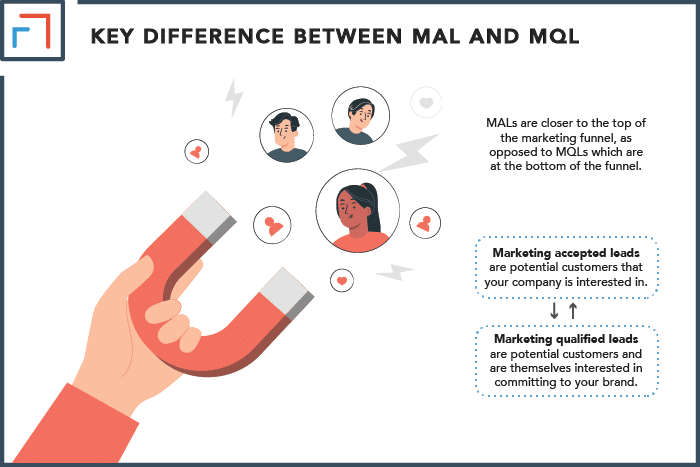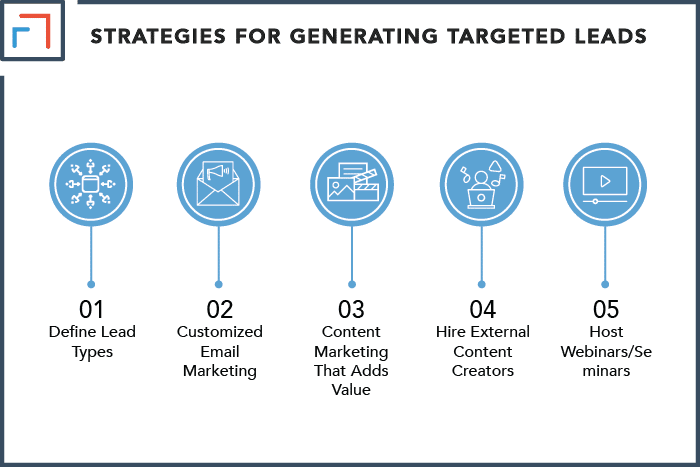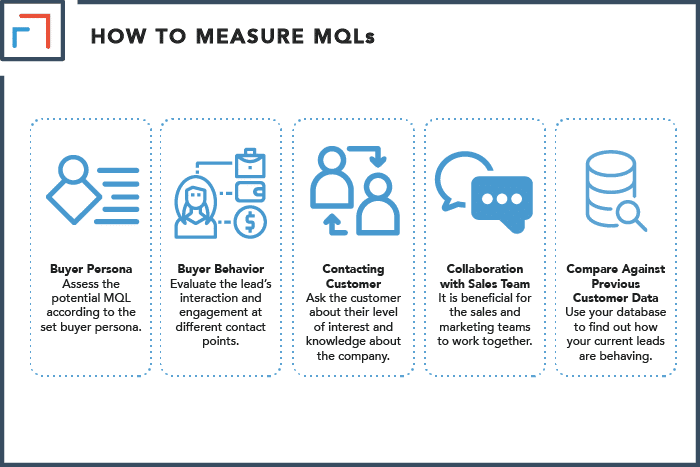A customer goes through a series of stages to reach the point of purchase, which requires marketers to be highly strategic. Businesses can determine which leads to focus on by splitting them into the MAL and MQL categories.
Marketing Accepted Lead (MAL) and Marketing Qualified Lead (MQL) are two stages within the customer lifecycle. Each type of lead behaves differently, so they require different approaches. These leads are handled by the marketing team, but the sales team usually develops the criteria to define them.
Since both lead types are distinct and have separate criteria to evaluate them, every business must carry out different strategies to generate and mature these leads. Below, we’ll discuss which aspects you need to focus on and where you can get creative with your approach.
Key Difference Between MAL & MQL
Marketing accepted leads are closer to the top of the marketing funnel, as opposed to marketing qualified leads which are at the bottom of the funnel.
Marketing accepted leads are potential customers that your company is interested in.
Marketing qualified leads are not only the potential customers you want to convert, but the leads themselves are also interested in committing to your brand to some level.
There’s a mutual level of interest/action between the marketing team and an MQL.

Marketing Accepted Lead (MAL)
A marketing accepted lead is any individual that your brand has recognized as a potential customer based on their demographics, psychographics, proximity to the brand, or some other relevant reason.
These leads need to be nurtured and matured before they can be convinced to make a purchase.
Even so, marketing accepted leads show more interest or purchase intent than a generic lead and thus fall into the defined target audience.
Marketers usually have minimal information about these leads.
However, they can often find data about consumer behavior and their interaction with market competitors.
Strategies For Generating Targeted Leads
In order to create targeted leads, you also need to be focused and strategic about demand generation.
Marketing accepted leads are supposed to mature into qualified leads.
For this purpose, make sure that you have carried out in-depth research about your consumer base as well as the creative strategies you can employ.
Some other strategies you can use include:
1. Define Lead Types
Before you begin your lead generation campaign, ensure that your marketing and sales team are on the same page about the qualifications of a useful lead.
This ensures that the marketing team spends time on the right consumers and passes along sufficiently matured leads.
To define lead types, your marketers should map out the target lead characteristics ahead of time.
This may include the lead’s location, culture, employment status, salary range, family size, social media presence, etc.
In this way, you can form a buyer profile and define a lead’s points of engagement with the brand.
2. Customized Email Marketing
Mass campaigning is a waste of resources if you want specific consumers to reach your sales team.
Therefore, you need to use your consumer information to personalize emails according to their interests.
This technique will help you deliver relevant content that will be more effective in drawing in the right leads.
3. Content Marketing That Adds Value
Blogs and articles can be a critical point of engagement for your target audience.
Therefore, it is just as important to provide information that informs the reader rather than simply advertising your brand.
Use content marketing to show your consumers that you understand their problems and you want to add value to their lives.
4. Hire External Content Creators
Bloggers and journalists who are not connected to your brand can be brought in to review your services and advocate for your brand.
This would promote the company with the credibility and validation of third parties.
Moreover, by reaching out to influencers that your target audience listens to, you can attract extremely relevant leads.
5. Host Webinars/Seminars
Arrange public events like webinars/seminars and invite prominent speakers or experts that are connected to your audience’s demographic and psychographic profile.
These events can be a strategic way to procure contact information from an audience that fits your ideal consumer base.

Marketing Qualified Lead (MQL)
Once marketing accepted leads have been nurtured enough, they can mature into marketing qualified leads.
These leads have engaged with the brand and have shown visible interest in purchasing the company’s service or products.
The consumer behavior of an MQL is tracked and analyzed using predetermined metrics.
The qualified leads are delivered to the sales team and are considered ripe for conversion.
How Does A Marketing Qualified Lead Behave?
There are various engagement and behavior patterns that turn an accepted lead into a qualified one.
These are some of the actions that you can look out for to decide whether your lead is qualified:
- Downloading an ebook from the company’s website
- Interacting with the live chatbot
- Subscribing to the email newsletter
- Using a free trial
- Following a brand social media account
- Attending a scheduled webinar
- Contacting the company for additional product information
How To Measure MQLs
To ensure that your leads are qualified, the marketing team uses predetermined metrics to assess the quality of the leads.
Some factors they might look at include:
1. Buyer Persona
Assess the potential MQL according to the set buyer persona. For example, does the lead match the profile of a target consumer?
Does the lead have sufficient purchasing power and authority to become a customer? Is the lead accessible to the brand in terms of physical proximity?
These questions would help you determine whether your lead should be handed off to the sales team.
2. Buyer Behavior
Evaluate the lead’s interaction and engagement at different contact points.
For instance, you can learn a lot by looking at the frequency of website visits, blog impressions, social media post interactions, whether they’re downloading free content, contacting company representatives, etc.
These actions communicate how much progress the lead has made towards the bottom of the funnel.
3. Contacting Customer
You can also go directly to the source since it can sometimes be tough to clarify the status of a lead.
Ask the customer about their level of interest and knowledge about the company.
Using this information, the marketing team can make a valuable assessment of the lead’s conversion potential.
4. Collaboration with Sales Team
For this stage of lead generation and processing, it is beneficial for the sales and marketing teams to work together.
This collaboration will help them build a consensus on the viability criteria of leads and which strategies can be adapted.
Moreover, marketers would become more aware of the point of lead maturity that would require instant sales involvement.
5. Compare Against Previous Customer Data
Use your database to find out how your current leads are behaving in comparison to the ways that your existing customers engaged at that point in their customer journey.
Moreover, use your data to determine which approaches were effective with prior customers. Once you know the successful strategies, you can evaluate how they can be replicated.

Points To Remember
Marketing accepted leads can be found very early on in your marketing campaign. A good MAL is usually quite close to your ideal audience persona.
Once you locate them, you can devote your marketing efforts to them until they become an MQL.
For both types of leads, the marketing company should have proper criteria for defining them.
All of these efforts are to help you design strategies that are targeted for each type of lead.
If you can do this, the conversion process becomes more efficient for the customer and the sales team.
